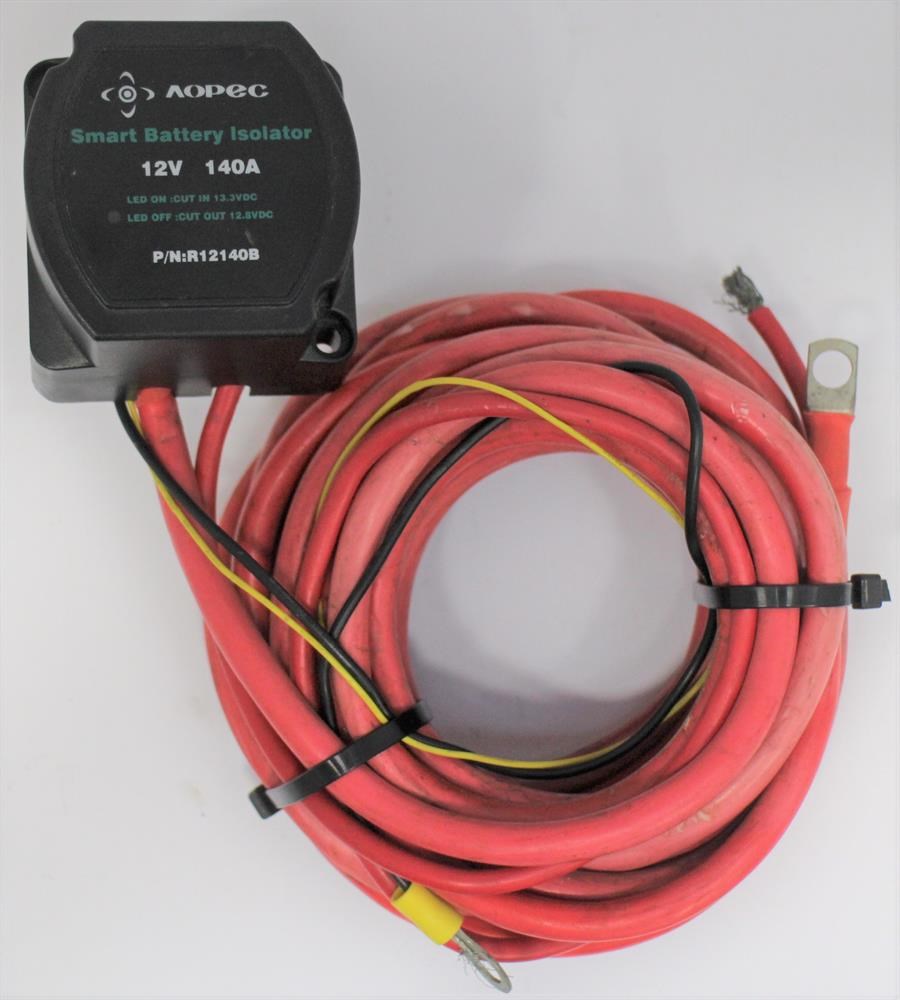

When the voltage reaches 13.3V (meaning the engine is on and the battery is fully charged), the isolator “cuts in” and sends 100% of the alternator’s current to your auxiliary battery. Smart battery isolators work by automatically sensing the voltage of your starting battery. Voltage-sensing smart isolators are far and away the best choice, so we’ll focus our discussion on these. There are three types of battery isolators out there: solenoid battery isolators, solid state battery isolators, and voltage-sensing relays (or “smart” isolators). However, they are not always the best choice for your van’s electrical needs, and in most cases a DC-DC charger is what you should go with.īattery isolators may not work properly with modern variable voltage alternators, won’t work with lithium batteries (unless you pay through the nose for a lithium-specific isolator), and may not maintain the proper voltage to fully charge your aux batteries. This is what you want to get if you already have your solar equipment, or if you want the flexibility to pick and choose the exact specs you need for each component.Ī battery isolator is a device that allows you to charge an auxiliary battery from your van’s alternator, while keeping your starting and aux batteries “isolated” from each other.īattery isolators are inexpensive, and they’re generally pretty easy to install. Single input DC-DC chargers do one thing, and one thing only: charge your aux battery from your alternator. What is a DC-DC Charger?Ī DC-DC charger (also known as a battery-to-battery charger, or b2b charger) is a device that takes the input from your alternator/starting battery and uses it to charge your aux battery.ĭC-DC chargers are able to charge just about any type of battery (including lithium), they work with modern variable voltage alternators, and they employ multi-stage charging to fully and properly charge your battery bank.ĭC-DC chargers come in two varieties: single input and dual input. We’ll go over both in this post, but in general we recommend that most people get a DC-DC charger for their rigs. There are two kinds of devices for this: DC-DC chargers and Battery Isolators. So you need a device that allows you to charge a second (auxiliary) battery from your van’s alternator without draining your starting battery when the engine isn’t running. But paralleling your batteries means that when the engine’s off, your electrical loads will also drain the starting battery – not good if you want to start your van in the morning! You can easily use your alternator to charge your second (auxiliary) battery simply by connecting the positive terminals of both batteries so that they’re in parallel. An alternator is a device that converts the mechanical energy from your van’s engine into electricity, and uses that electricity to power electronics in your van and charge your starting battery.
#Smart battery isolator advance auto how to#
How To Charge Your Van’s Batteries While DrivingĮvery vehicle has an alternator. Electricity on the Road in Any Conditions!.Installing a DC-DC Charger or Battery Isolator in Your Van.What Size DC-DC Charger or Battery Isolator Do You Need?.How To Charge Your Van's Batteries While Driving.Life on the road means a fair amount of driving, and having the ability to charge your batteries while driving is essential for vanlife.

And if you’re on a tight budget, you can even skip the solar and still have basic electricity in your DIY van build. That’s why we highly recommend setting up your campervan electrical system to charge your batteries from your van’s alternator while you’re driving.Ĭharging from your alternator is a great way to supplement your solar panels and make sure your batteries stay topped off no matter the weather. Even with our larger 400W system we’ve run into problems with battery drain after about 4-5 days in poor sunlight conditions. But sometimes solar just isn’t enough – especially if your budget doesn’t allow you to throw down for a huge multi-panel system.Ĭloudy weather, wildfire smoke, and camping in shady forests can limit the amount of sunlight getting to your panels, leaving you scrambling for adequate sun to recharge your depleting batteries.
#Smart battery isolator advance auto install#
Many vandwellers install solar power in their rigs. It means you can live completely off the grid with lights, a fridge, phones and computers – all while not worrying about electric bills or power outages.

Having electricity in your van is just plain awesome.


 0 kommentar(er)
0 kommentar(er)
